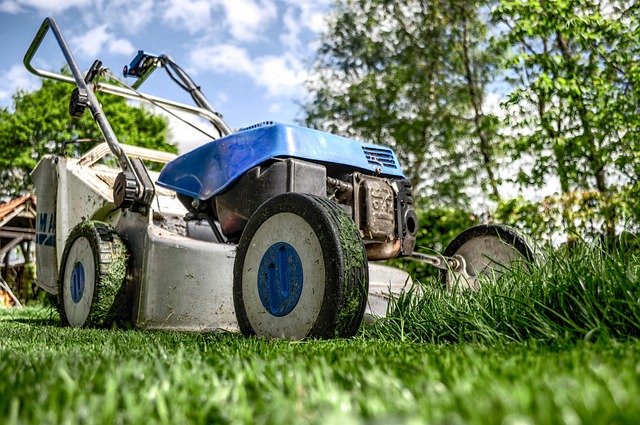Backyard Makeover: Complete Garden Shed & Storage Guide
A well-designed garden shed can do more than hide clutter — it can become a functional workspace, protect tools, and boost outdoor living. This guide covers smart storage systems, must-have shed features, maintenance tips, and flexible financing options including monthly payment plans to help you choose and afford the right shed.

Smart Storage Solutions for Garden Organization
A garden shed should be more than a pile of tools and boxes. Thoughtful storage makes the space efficient, protects your equipment, and simplifies seasonal tasks. Start by using vertical surfaces: wall-mounted shelving converts unused wall space into neat storage for pots, fertilizers, and smaller power tools. Install pegboards to keep hand tools visible and easy to grab, and add labeled bins so frequently used items are at hand.
Overhead storage racks are ideal for bulky, off-season items like folding chairs or holiday decorations. For those who expect their needs to change, modular systems with adjustable shelves and removable hooks give you flexibility without a full remodel. Consider a corner unit or slim cabinets to maximize narrow areas; every inch counts in smaller models.
Create dedicated zones inside the shed: a potting bench with a small sink or basin if your plumbing allows, a tool wall for rakes and shovels, and secure shelving for chemicals and fertilizers stored out of reach of children and pets. Good organization not only speeds up projects but also helps items last longer by reducing wear and moisture exposure.
Financing Options and Payment Plans
Purchasing a high-quality shed no longer requires paying the full cost up front. Many retailers and manufacturers now provide financing options, including monthly payment plans that spread costs over time. Typical routes include in-house financing offered directly by the seller, personal loans from banks or credit unions, and store credit cards that may feature promotional financing periods.
When comparing options, review interest rates, repayment terms, fees for late payments, and any deferred-interest clauses. A longer term lowers monthly outlay but increases total interest paid; a shorter term costs more per month but can be cheaper overall. Also check whether the financing covers delivery and installation or just the structure itself.
| Financing Type | Typical Terms | Monthly Payment Range |
|---|---|---|
| In-House Financing | 12-36 months | $50-200 |
| Personal Loan | 12-60 months | $75-300 |
| Store Credit Card | 6-18 months | $100-400 |
Prices, rates, or cost estimates mentioned are based on current information and may change. Independent research is advised before making financial decisions.
Essential Features for Durable, Functional Storage
The best garden sheds combine durability with practical features. Choose weather-resistant materials such as treated timber, pressure-treated wood, or low-maintenance composites that resist rot and insect damage. Metal sheds can be economical and sturdy but require proper coating to prevent corrosion.
Ventilation is important to avoid condensation and mold, especially if you store fabric or wooden items. Look for vents or windows that encourage airflow without compromising security. Speaking of security, a reliable locking mechanism and reinforced door frames will help protect tools and equipment from theft.
Light is another underrated factor: windows bring natural light for tasks and reduce the need for electrical lighting during the day. If you plan to use power tools or charge battery packs inside the shed, install grounded electrical outlets and consider dedicated lighting. Reinforced flooring will support lawn mowers and heavy equipment; choose thicker floor joists or a concrete pad for high-load uses. Wide doors, preferably double doors or a ramp, make it easier to move large items in and out.
Maintenance Tips for Long-Lasting Performance
Regular upkeep preserves both appearance and function. Inspect the roof and gutters seasonally to clear debris and prevent water buildup. After heavy storms check for leaks or shifted panels. For wooden sheds, apply a preservative, stain, or paint every 1–3 years depending on local climate and the finish you choose.
Keep ventilation paths clear to reduce humidity and the risk of mold. Store chemicals and paints in sealed containers and away from sources of heat. If you notice early signs of rust on metal sheds, treat and repaint affected areas to stop progression. Lubricate hinges and locks annually to ensure smooth operation, and replace worn weatherstripping to keep pests and moisture out.
A simple checklist—clean gutters, inspect roof, seal cracks, and treat wood—can extend your shed’s life by many years and protect the items inside.
Planning, Permits, and Placement
Before you buy or build, think about where the shed will sit on your property. Consider drainage, access, sunlight, and proximity to utilities if you want electricity. Placing a shed on a level, well-drained base such as compacted gravel or a concrete slab will reduce settling and moisture problems.
Always check local building codes and homeowners association rules. Some areas require permits for structures over a certain square footage or for sheds with electrical hookups. Failing to secure necessary permits can lead to fines or complications when selling your property.
Final Considerations
A thoughtfully selected and maintained garden shed expands your outdoor living options—providing organized storage, a hobby workspace, or simply a tidy exterior. Use smart storage systems to maximize space, prioritize durable materials and ventilation, and follow a basic maintenance routine to protect your investment. Explore financing choices to find a payment plan that fits your budget, and verify local regulations before you proceed. With the right planning, your shed will be a functional, long-lasting addition to your yard.






